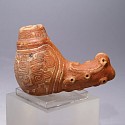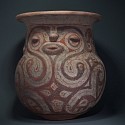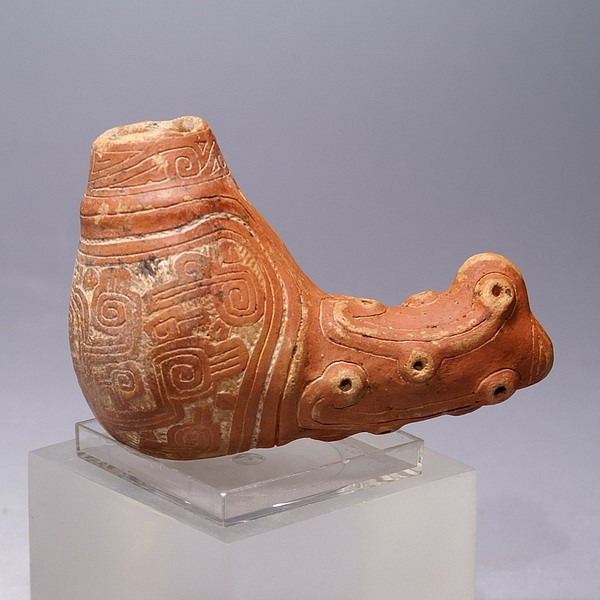





Brazil, Marajo Ceramic container in the form of a Mythical Cayman
These containers are highly valued because of the quality of artistry. They have a hole to tie a string through, either for suspension or to attach a cover. This vessel has a stylized Cayman's snout and finely incised designs depicting stylized birds’ heads on the chamber. Similar vessels illustrating a Cayman's head can be found in UNKNOWN AMAZON, on page 150 and in the catalog O MUSEU PARAENSE EMILIO GOELDI, on page 134.
Period: Brazil, Marajo Island, Camutins Subphase, c. AD 400 - 800
Media: Ceramic
Dimensions: Length 4.4" x Height 3.1"
$3,800
N1056
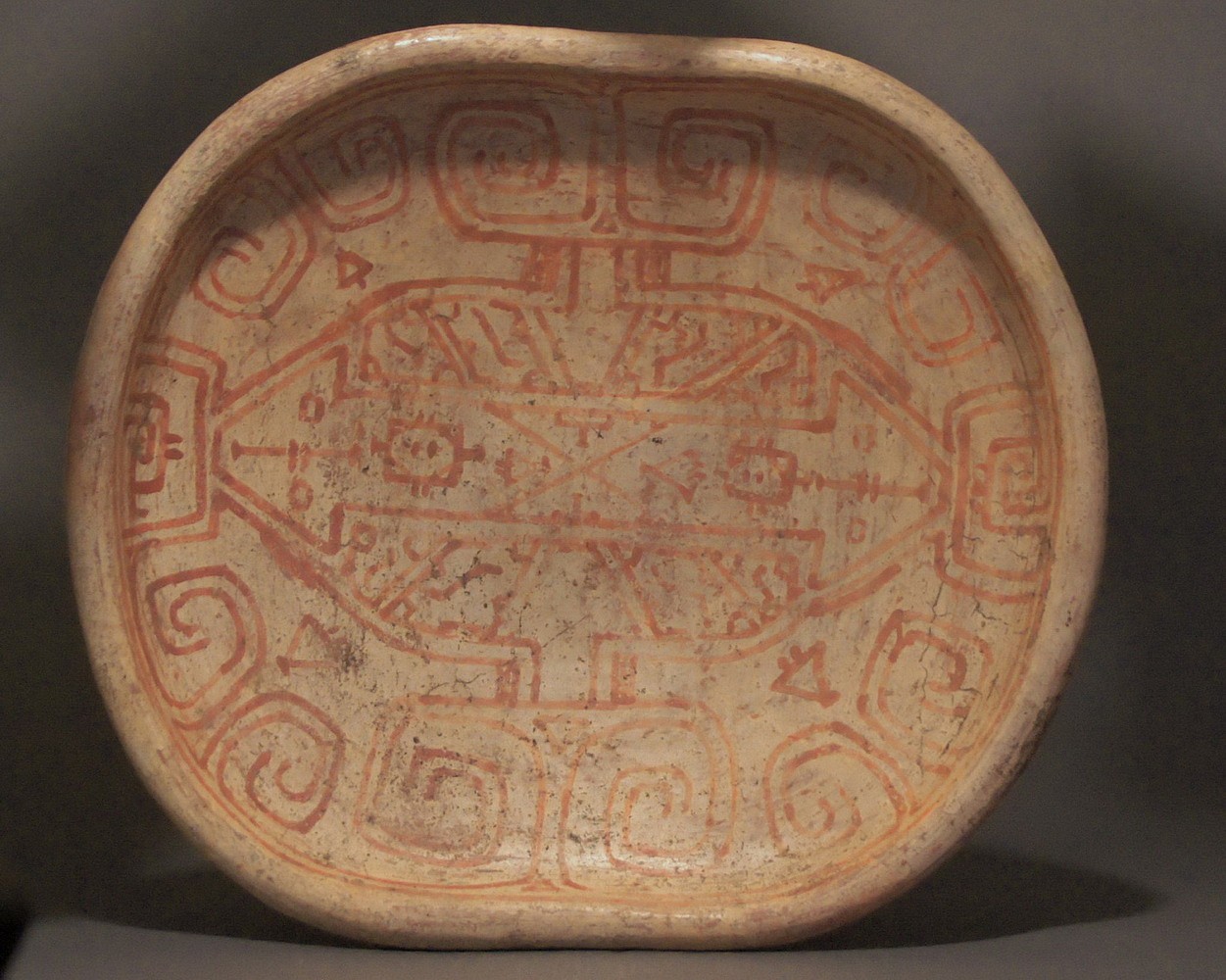





Brazil, Marajo Decorative Ceramic Painted Plate
This is a classic six-sided plate done in the Joannes Painted style with rolled rim. The inside surface is decorated with an abstract double-headed serpent in a reddish-brown slip. The plate has a slight curved shape and is in good condition.
Period: Brazil, Marajo Island, Camutins Subphase, c. AD 400 - 800
Media: Ceramic
Dimensions: Length: 33 cm. x Width: 29 cm.
Price Upon Request
n3004
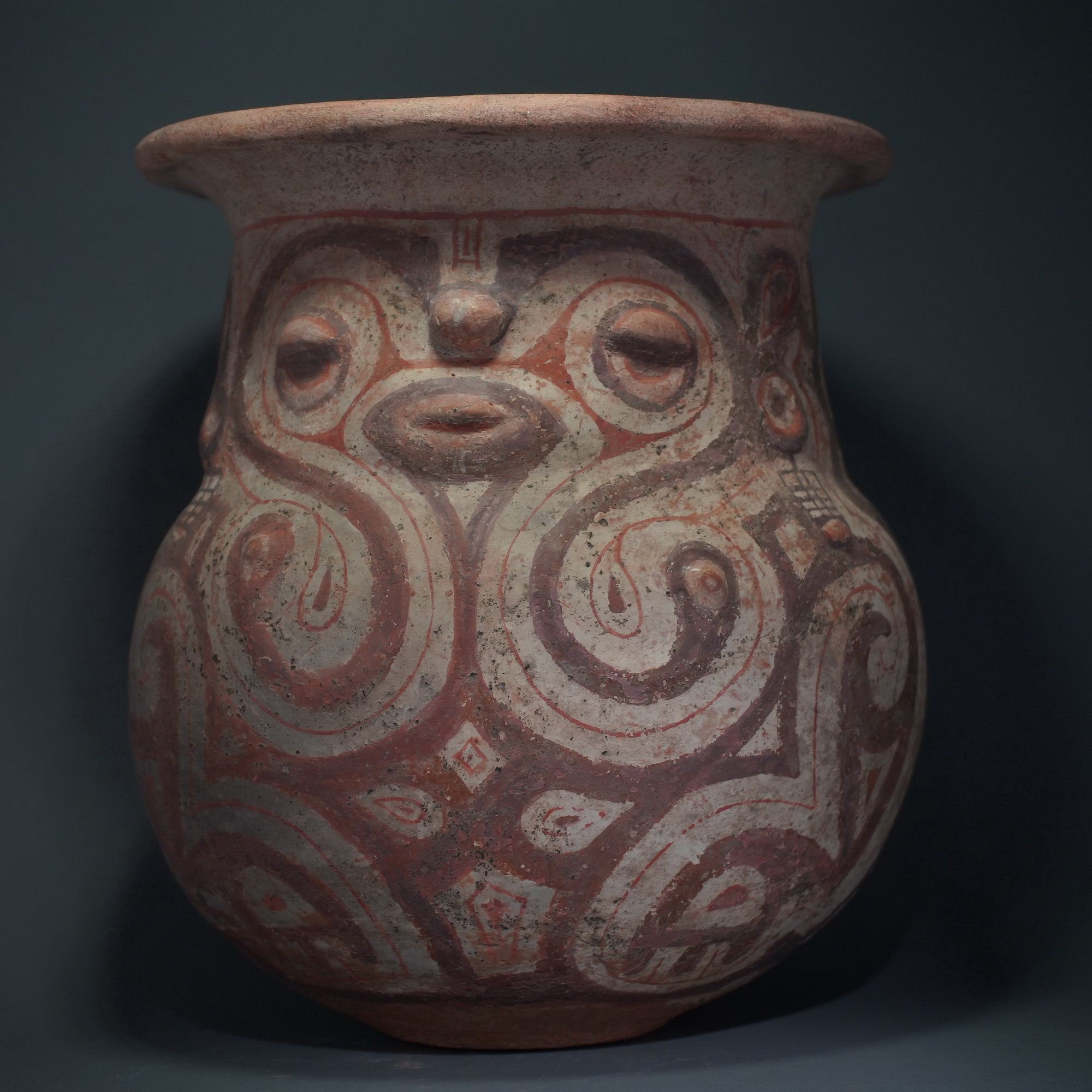
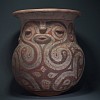


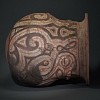



Brazil, Marajo Janus-Figure Burial Urn
The figure is wearing ear ornaments and has symmetrical serpents encircling the eyes, terminating on the body. Below is a pentangular Venus element. A similar vessel is illustrated in MARAJO-Ancient Ceramics from the Mouth of the Amazon, 2011, Denver, fig 75.
Ex-Collection Jean Lions Riode Janerio, Brazil circa 1970's.
Period: Brazil, Marjo Island, c. AD 400 - 1350
Media: Ceramic
Dimensions: Height: 12 1/4"
$7,750
p1061
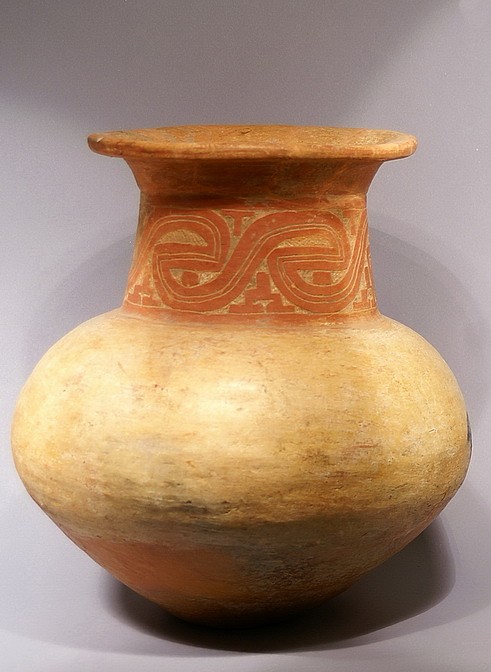
Brazil, Marajo large ceramic bichrome vessel with incised neck
This large ceremonial urn/vase is globular in form and tapers at the base. The neck is long and incised with a scroll pattern and fluted rim. The incised scroll design on the neck is a common motif in Marajoara art. Zoomorphic in character, theses scroll designs appear on the bodies of both humans and animals and on representations of clothing and furniture such as stools. Because of their similarity to painted patterns that have ritual significance in the art of remaining descendants of the culture, some interpretation of their symbolic significance can be reached. Sometimes they are referred to as "spirit" designs according to shamans who during drug induced trances report the appearance of these markings upon the bodies of ancestral spirit people. With the possible exception of certain elite groups, the Marajoara peoples tended not to decorate their common household objects. However, they took great care to elaborate objects of ceremonial function such as funerary urns used as receptacles for the remains of the deceased. Although the actual function of this vessel is not known with certainty, it is too sophisticated in both form and decoration to have been merely utilitarian, but too small to be used as a burial urn. It is reasonable to assume, however, that it was used in a feasting ceremony. This jar has a smudge stain from the firing process on one side. Several examples of similar style and iconography are illustrated and discussed by Anna C. Roosevelt in "Moundbuilders of the Amazon: Geophysical Archaeology on Marajo Island, Brazil", San Diego, Academic Press, Inc, 1991.
Period: Brazil, Marajo Island, Camutins Subphase, c. AD 400 - 800
Media: Mixed Media
Dimensions: Height: 16"
$17,500
MM069
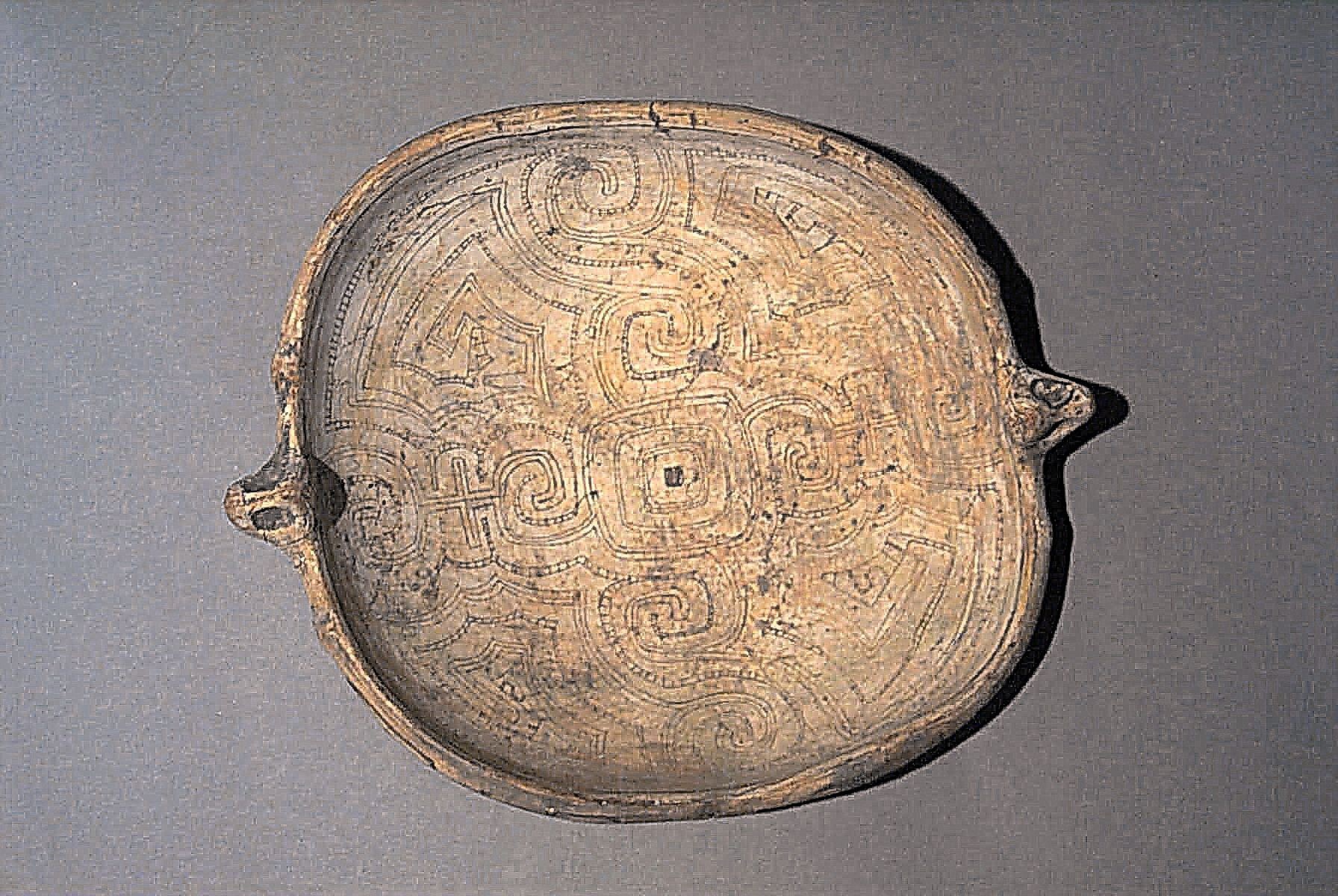




Brazil, Marajo Plate with incised geometric design and zoomorphic handles
Ceramic dish used for ceremonial offerings is decorated in buff color slip over incised geometric curvilinear designs on the interior and underside of the rim which is embellished by two zoomorphic adorno handles. The overall shape suggests a possible interpretation of a turtle, an animal motif that appears frequently in Marajo ceramics. The fineline incised geometric pattern that decorates the interior begins with a central theme of a square within the square which is surrounded by S-shaped scrolls, hooks and cruciform designs. These types of geometric motifs which occur exclusively on ceremonial vessels designate this as a very special dish. A combination of fine and wide incised geometric lines decorate the outer portion of the rim. The underside is plain orange-wear. The painted incised interior, a hold-over from earlier phases is consistent with the design work from early Taino ceramics of the Carribean. One example illustrating similar geometric design and incising technique can be seen in"O Museu Paraense Emilio Goeldi", Banco Safra, 1986, p. 133
Period: Brazil, Marjo Island, c. AD 1000 - 1200
Media: Ceramic
Dimensions: Length: 13" x Width: 10 1/4"
$9,500
99203
